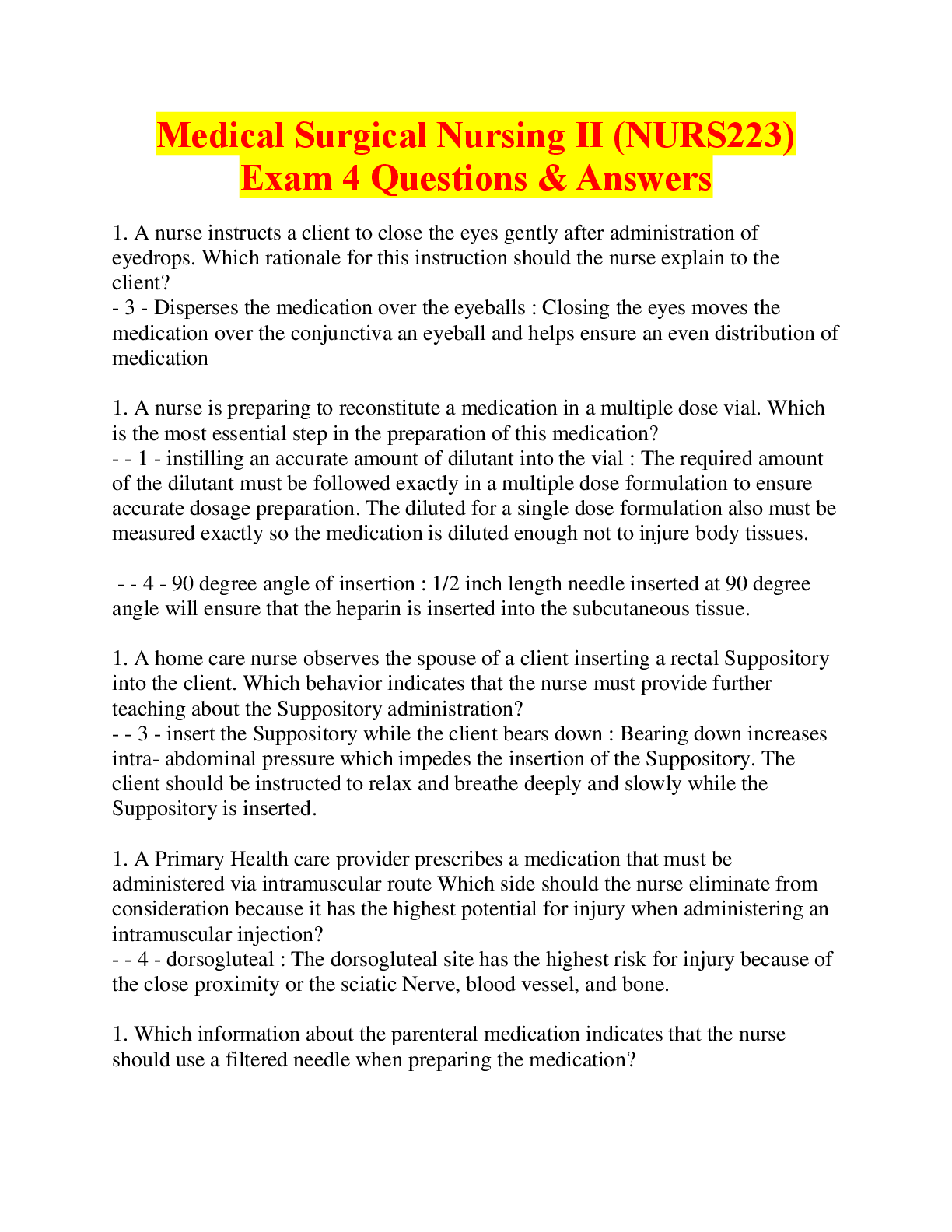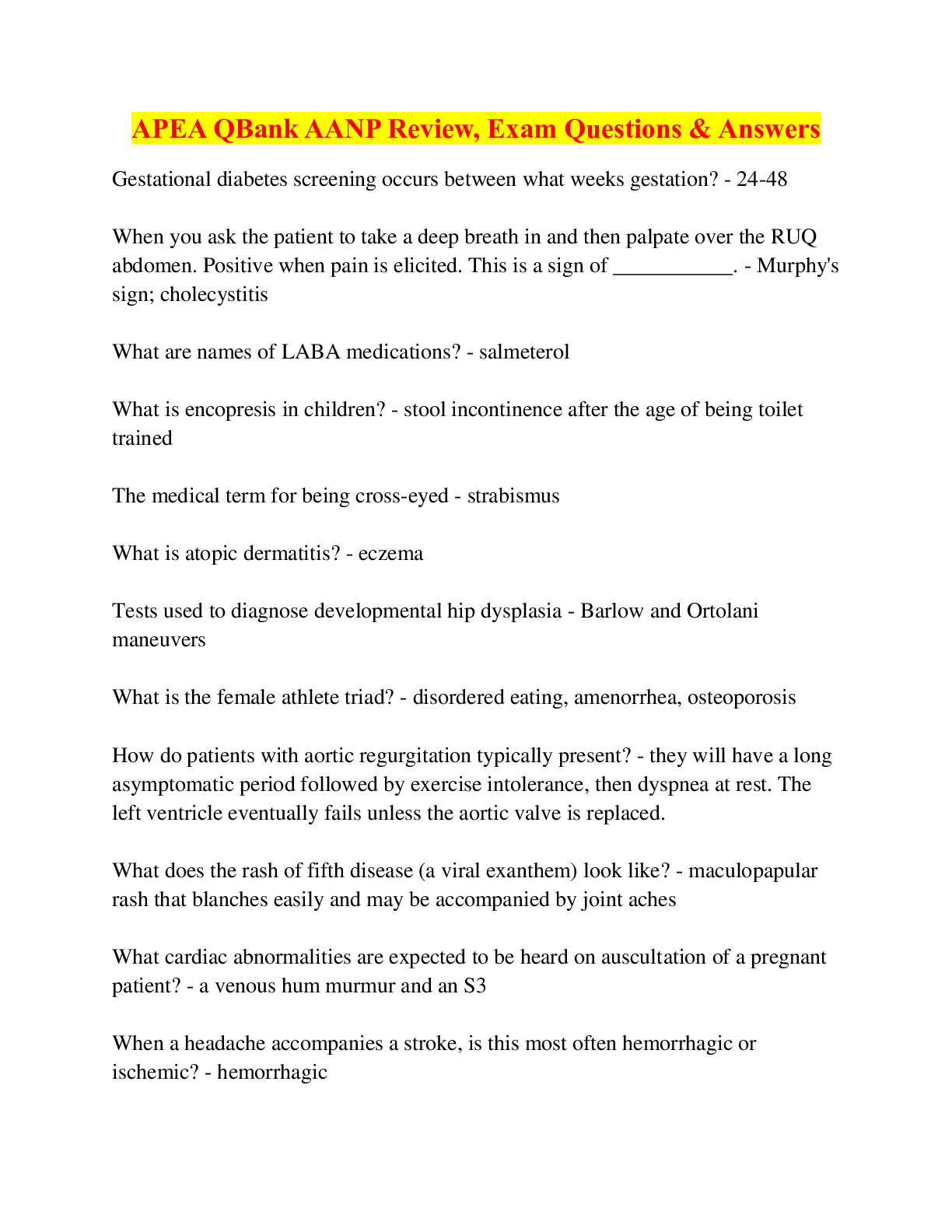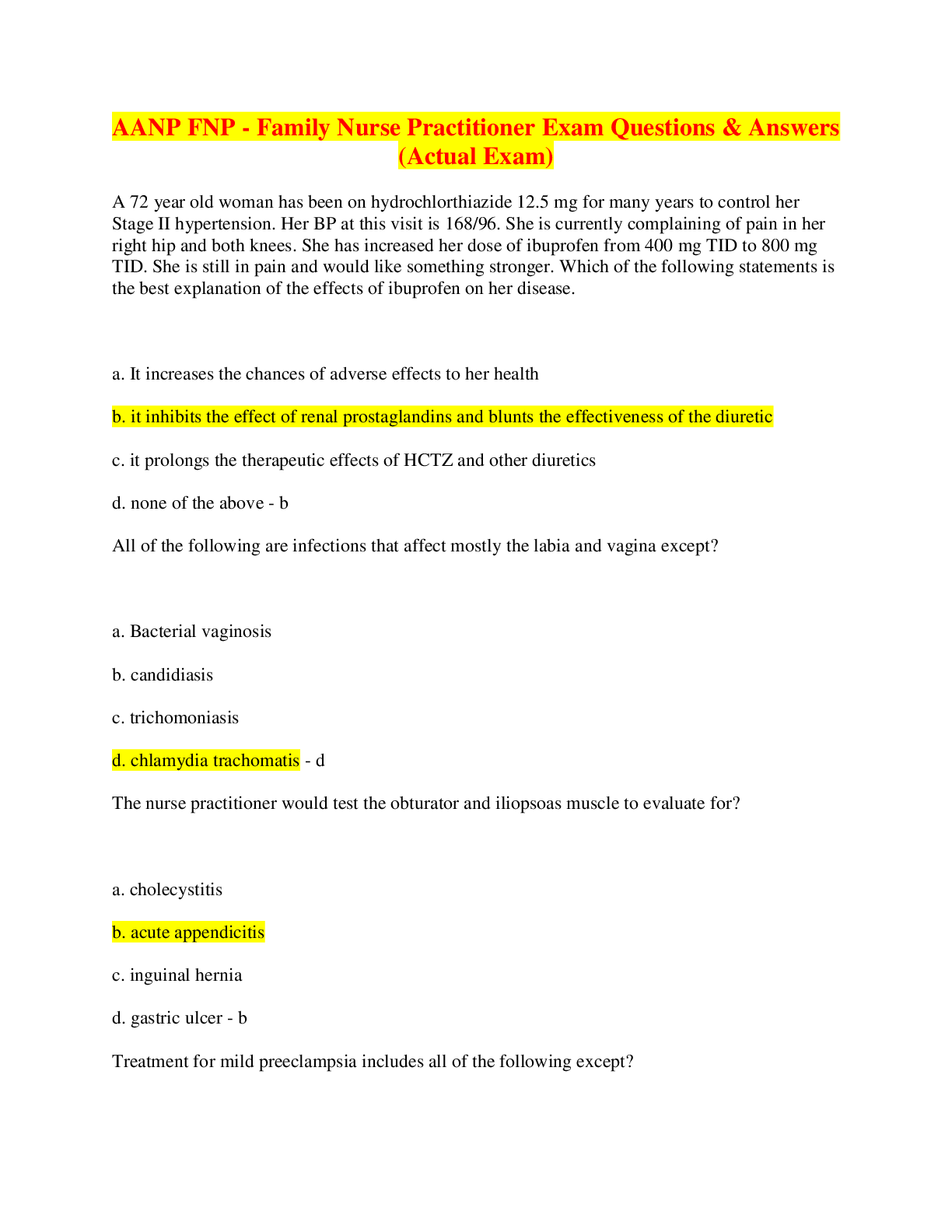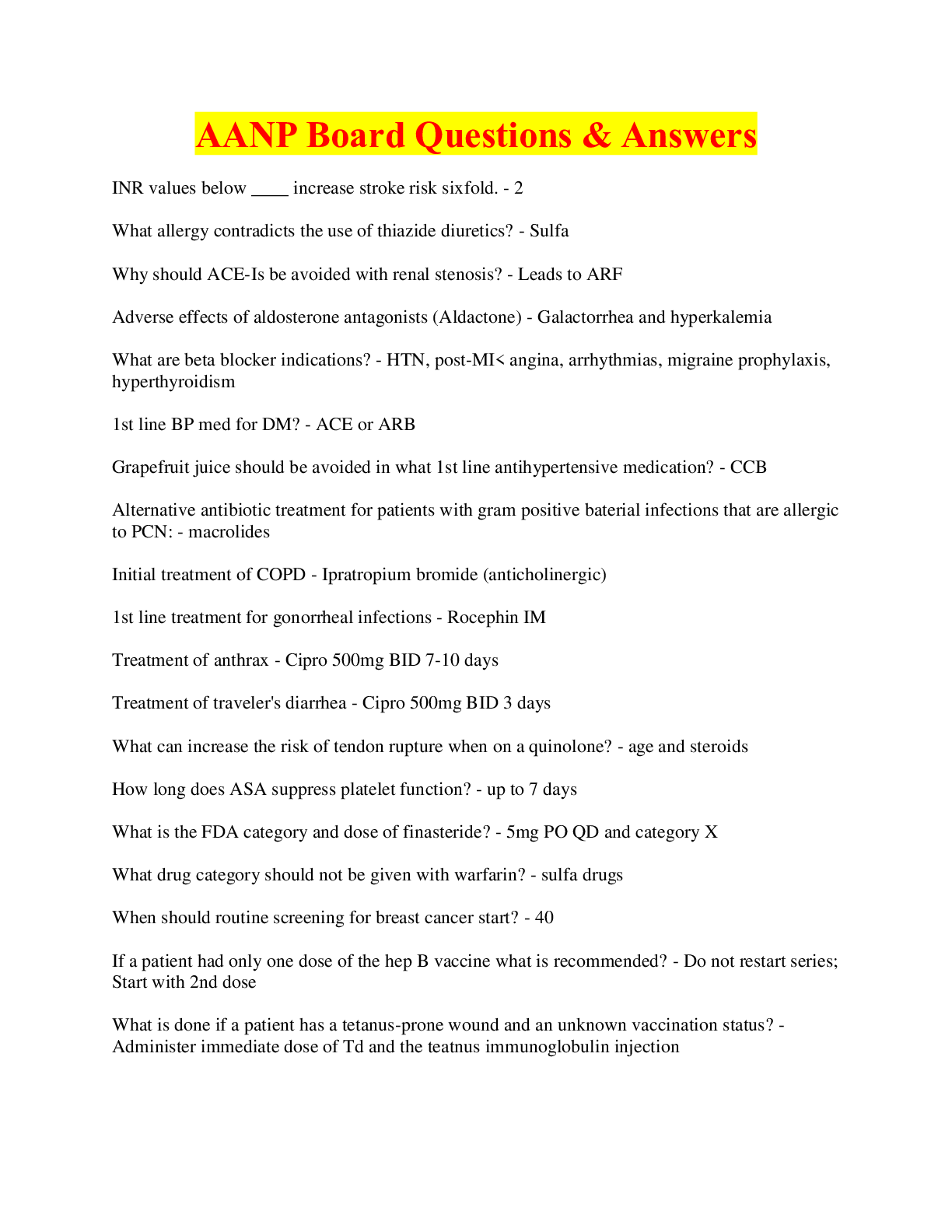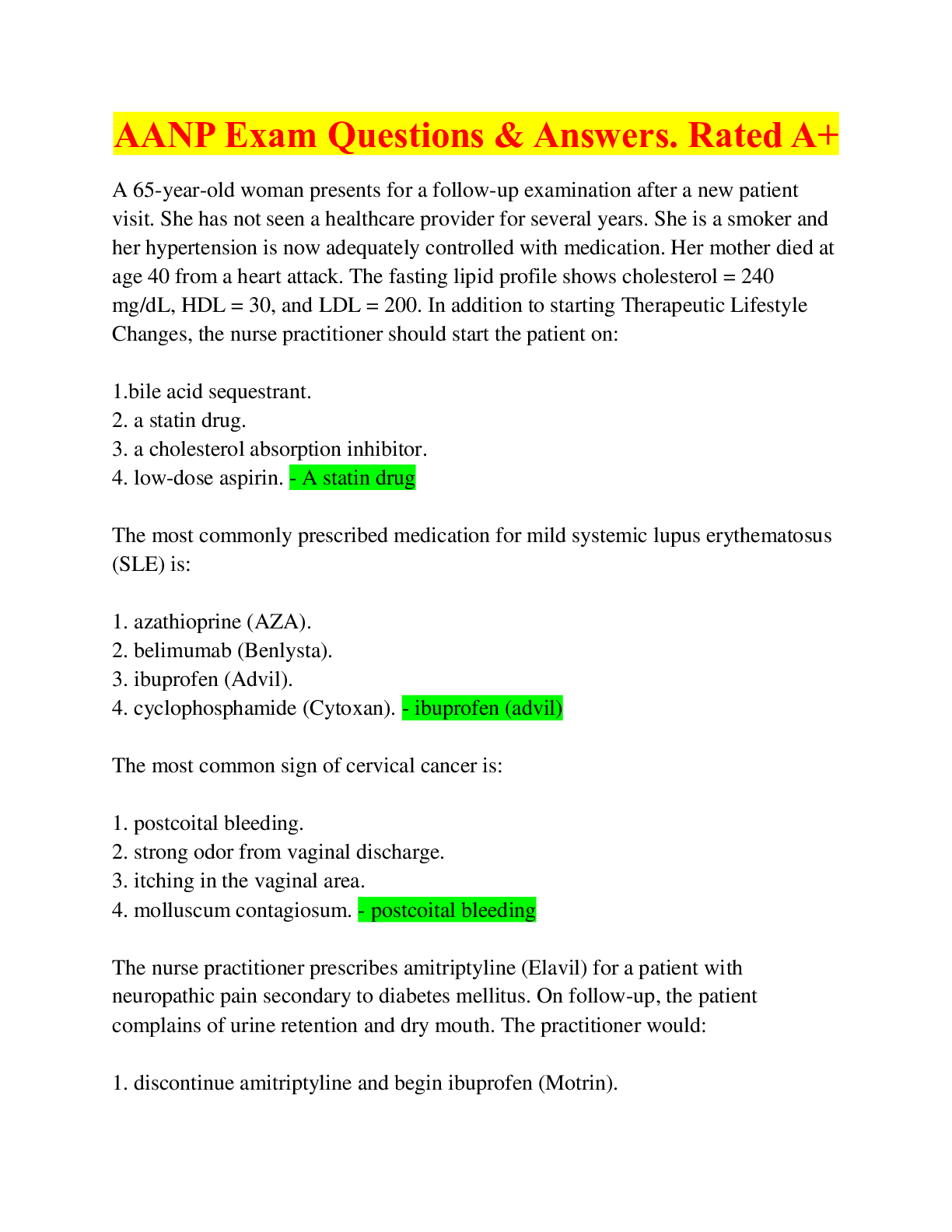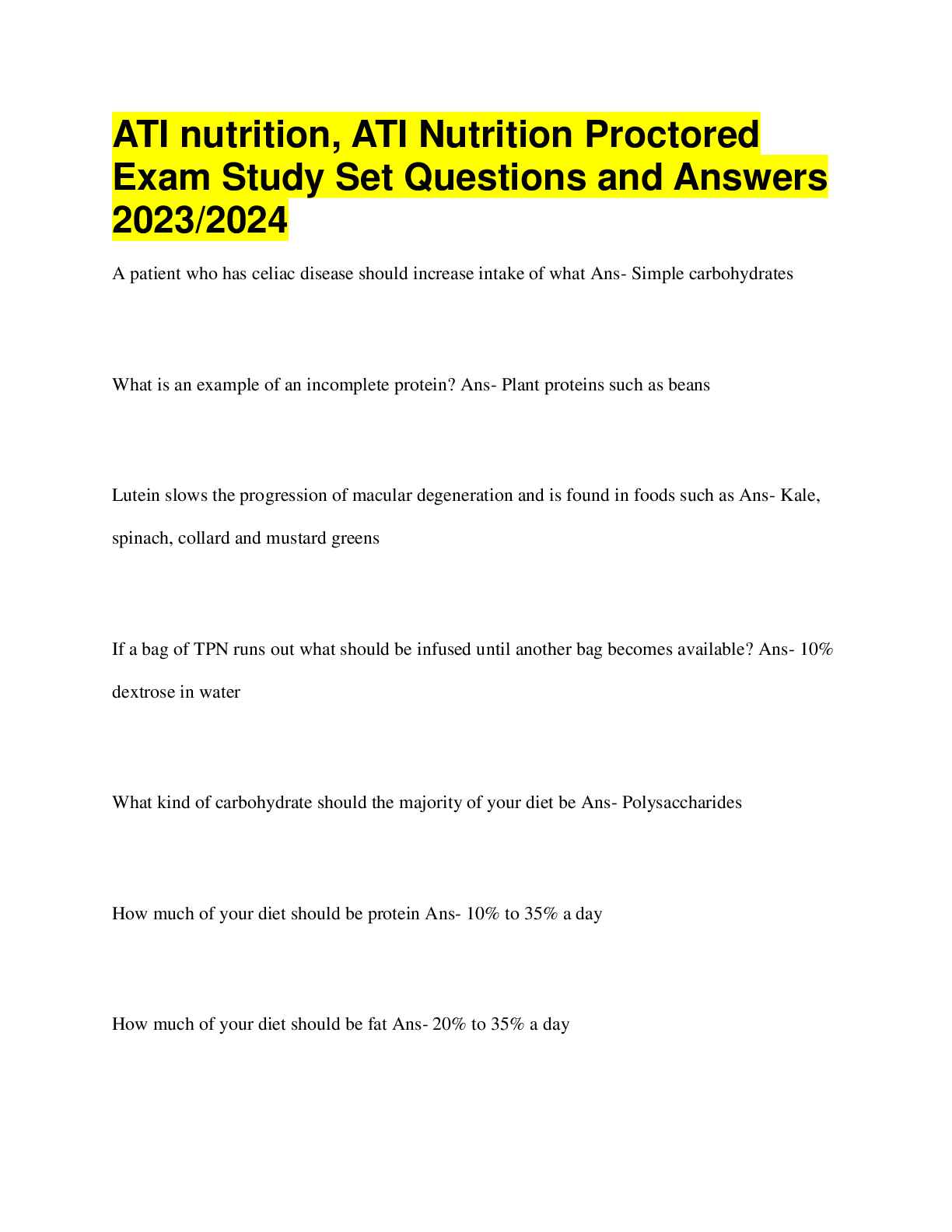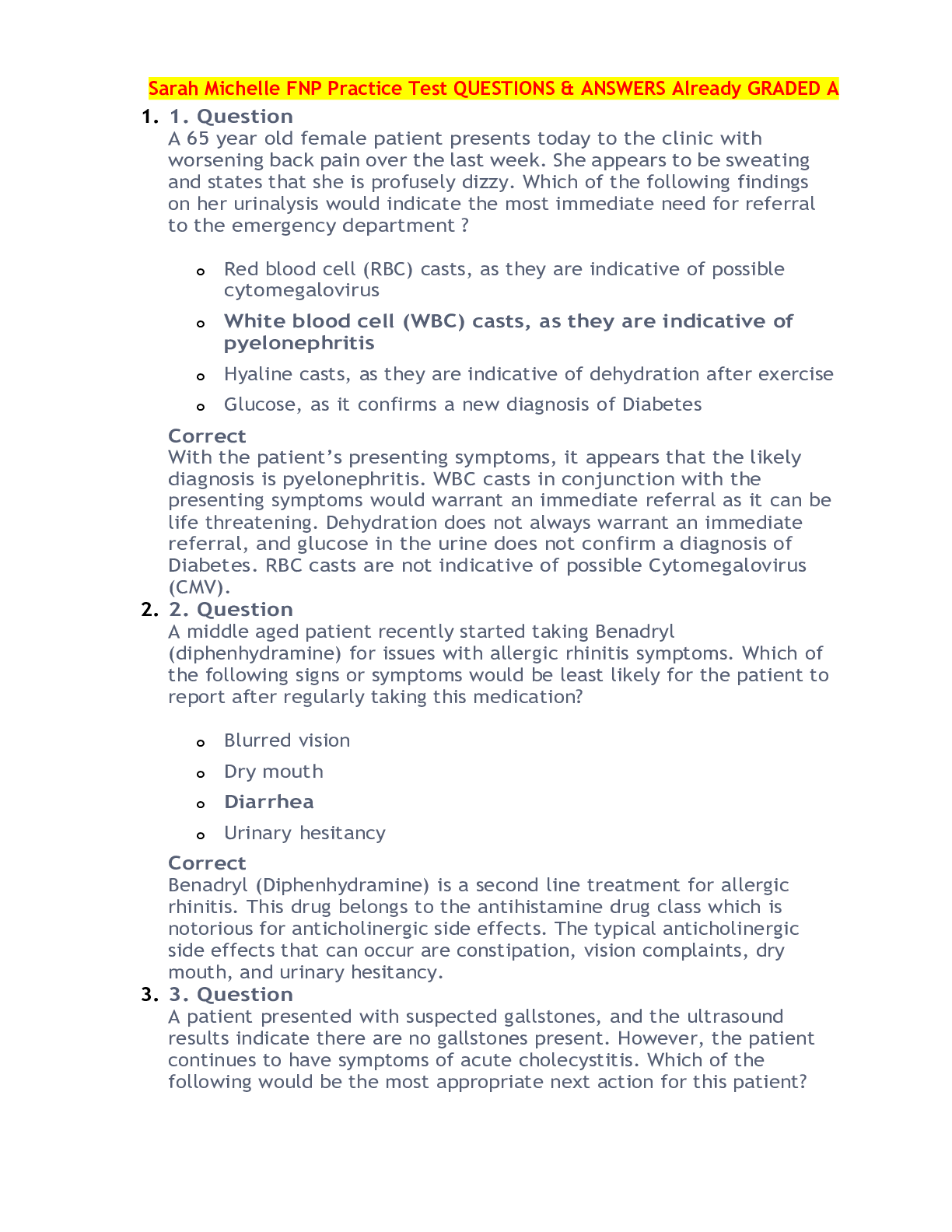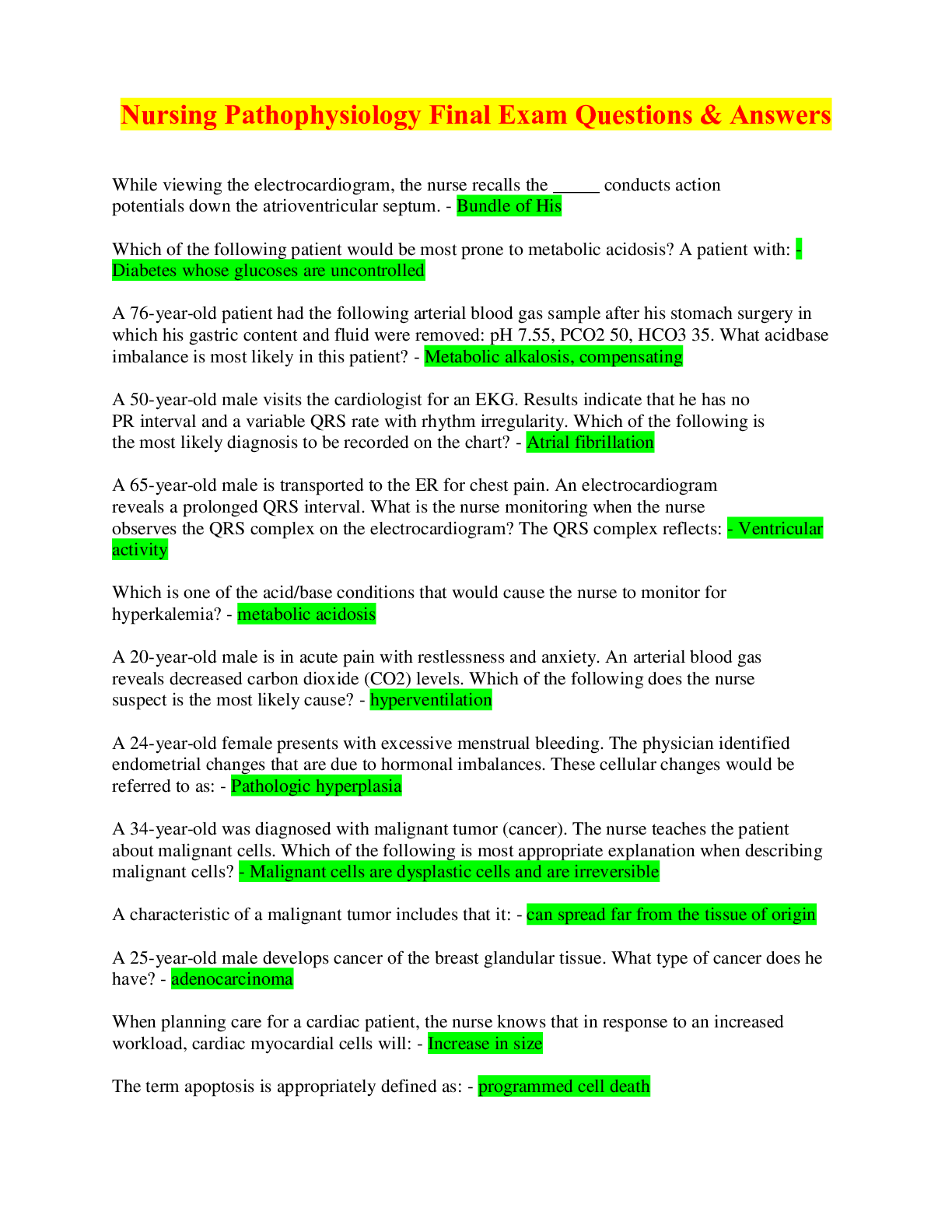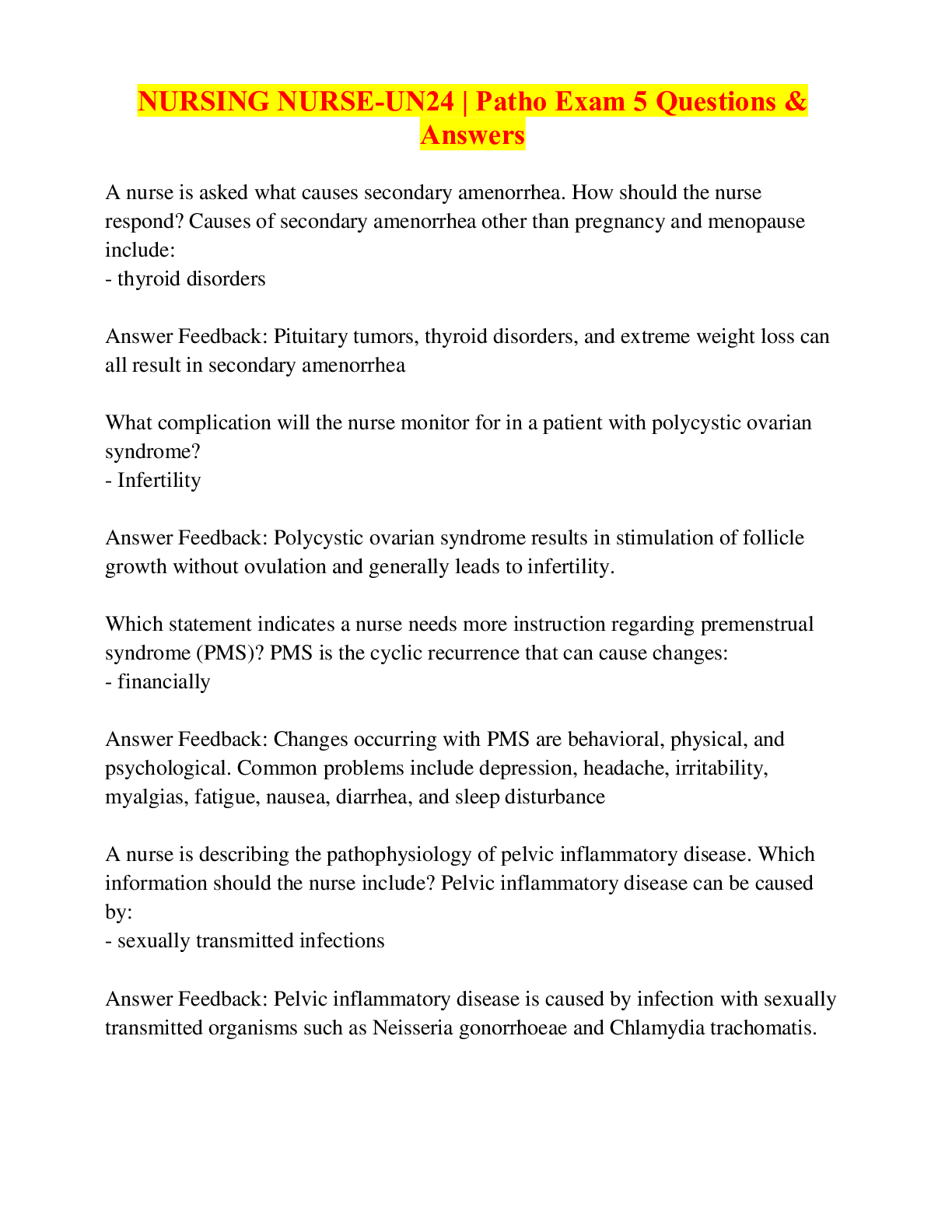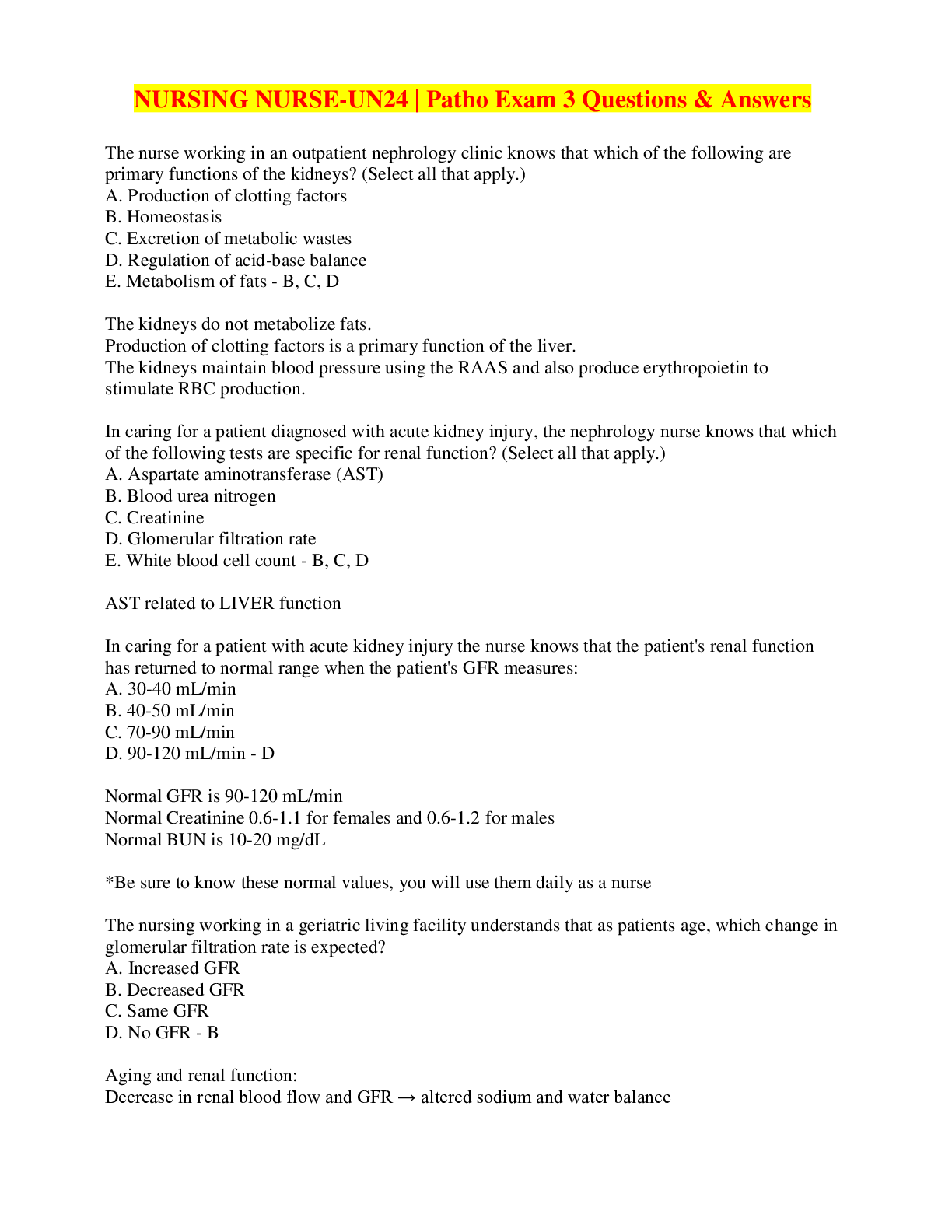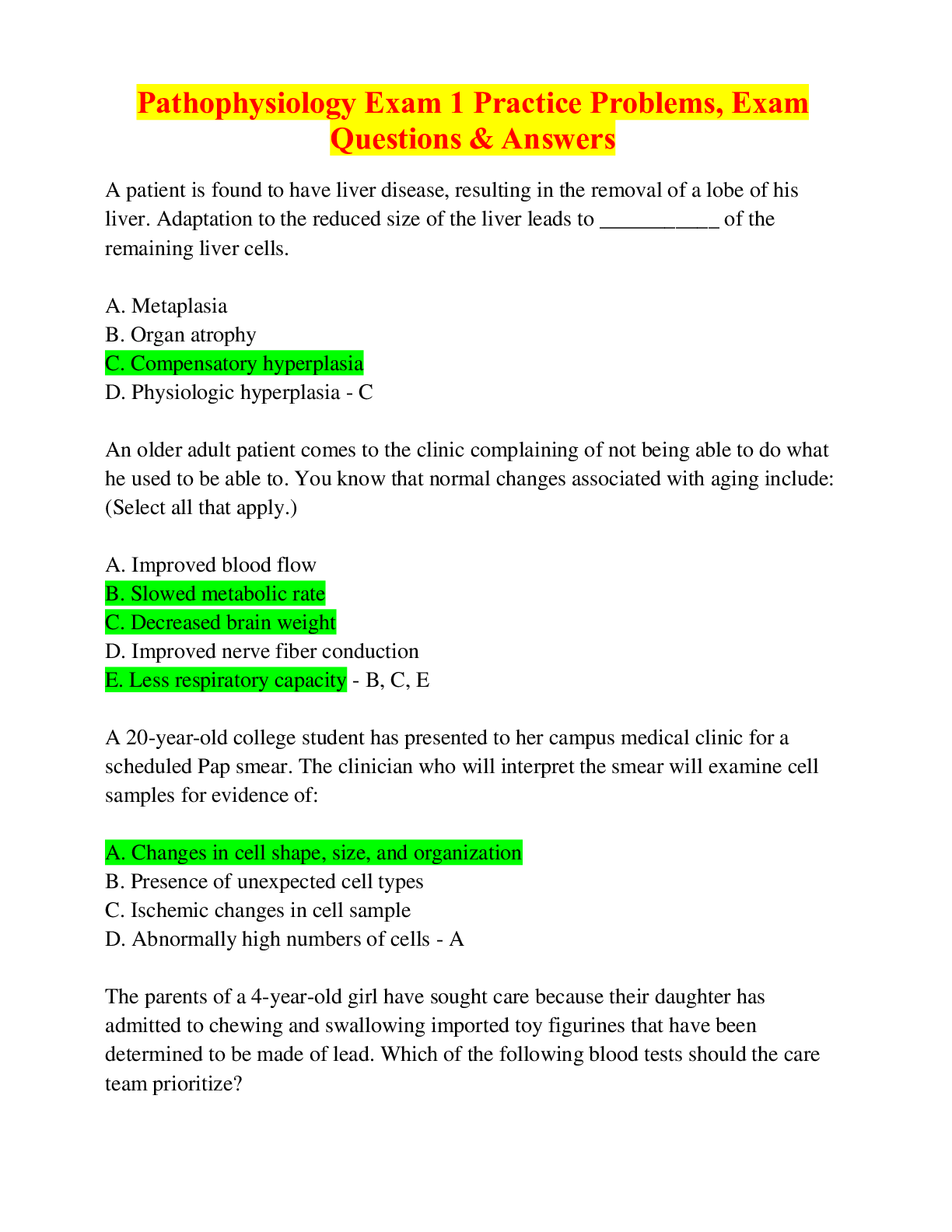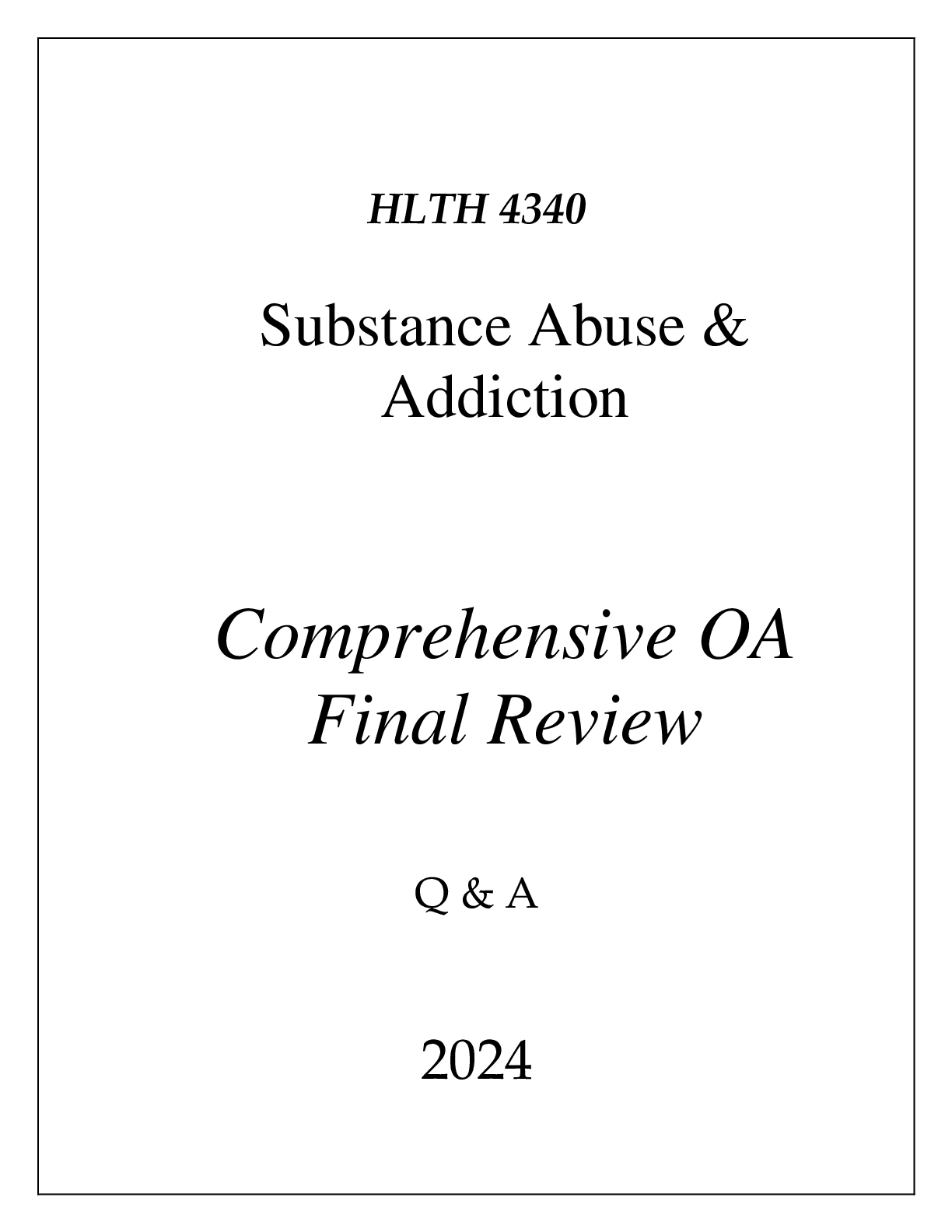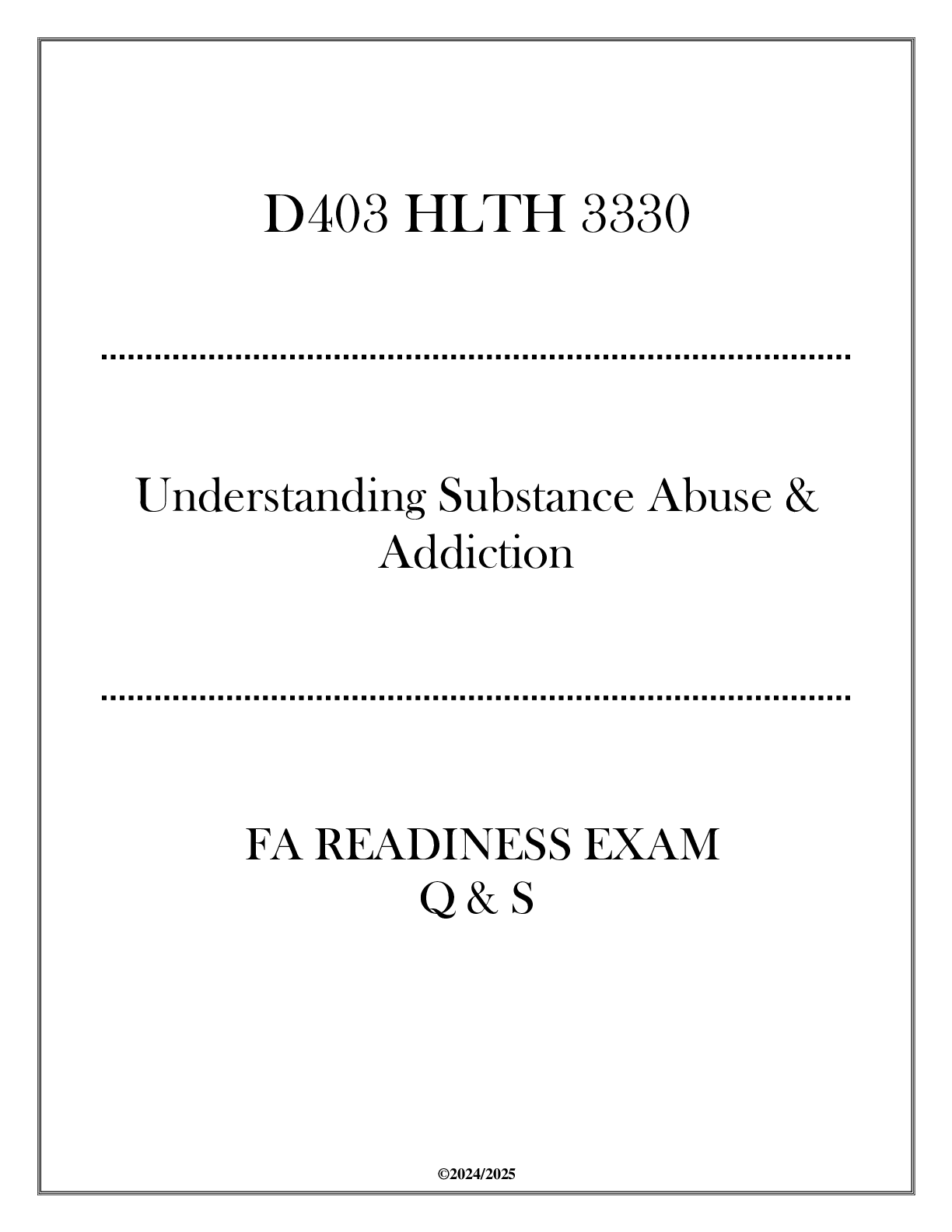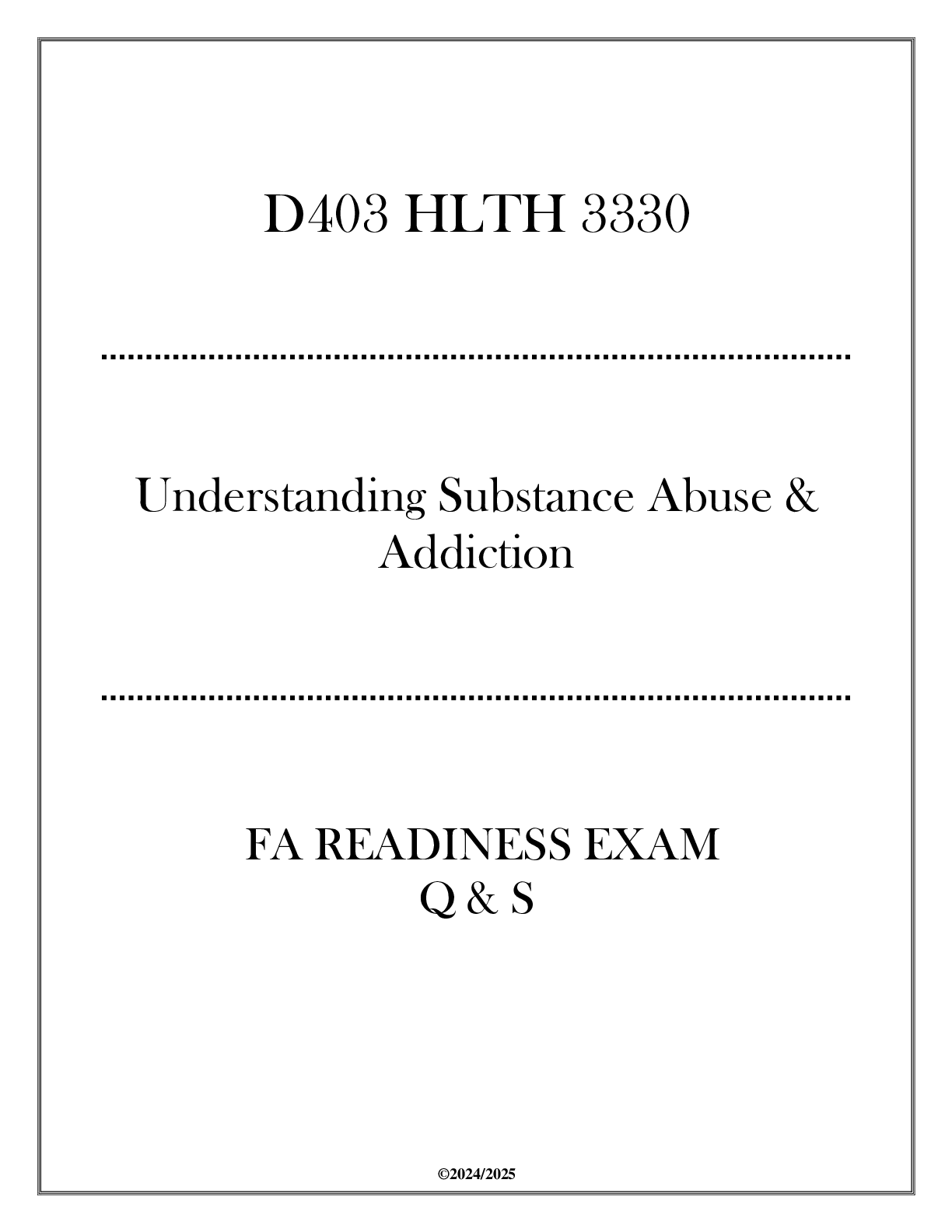*NURSING > EXAM > NEI questions on ADHD, Dementia, Substance Abuse & impulsive Compulsive Disorders. (Test 4) Answered (All)
NEI questions on ADHD, Dementia, Substance Abuse & impulsive Compulsive Disorders. (Test 4) Answered.
Document Content and Description Below
NEI questions on ADHD, Dementia, Substance Abuse & impulsive Compulsive Disorders. (Test 4) Answered.-Peter, a 35-year-old stockbroker, has been advised by his supervisor to come and see you, the comp... any mental health consultant. His supervisor is complaining that he often comes late to appointments, is inappropriately fidgety, interrupts people during meetings, has been offensive towards coworkers, and has been known to party excessively on weeknights. Peter asserts that he is just fine; he has a lot of projects on his mind and is simply standing up for himself when speaking with others. He likes to go out in the evenings to unwind. Recognizing probable ADHD, you interview both the patient and his work buddy, who is a longtime friend. How would you start your questions? A. Compared to his parents, how often does the patient... B. Compared to other people his age, how often does the patient... C. Compared to his childhood, how often does the patient... D. Compared to his children, how often does the patient... The symptoms of ADHD can present differently in patients at different ages. While hyperactivity is a main symptom in children for example, this will frequently translate into internal restlessness in adults. A and D - Incorrect. While ADHD has a strong genetic component, it is not advised to ask him first to compare himself to either his children or his parents. An accurate family history would be beneficial, however. B - Correct. When trying to diagnose this adult patient with ADHD, it is preferable to first ask him to compare his behavior to that of other adults his age, as this will give a better idea of the severity of his symptoms at this time. C - Incorrect. While it is important to obtain a medical history, the patient might not have the best recollection and might not be the best judge of his behaviors as a child. References Stahl SM. Stahl's essential psychopharmacology, fourth edition. New York, NY: Cambridge University Press; 2013. (Chapter 12) According to DSM-5 criteria, what is the maximum age threshold for symptom onset when making a diagnosis of attention deficit hyperactivity disorder (ADHD)? A. 5 B. 7 C. 12 D. 15 C - Correct. In the fifth edition of the Diagnostic and Statistical Manual of Mental Disorders, the maximum age threshold for symptom onset for diagnosing ADHD changed from 7 to 12. Other revisions included the fact that, although symptoms must have been present prior to age 12, there does not have to have been impairment prior to age 12 when diagnosing someone who is older. The symptom count threshold also changed for adults (defined as age 17 and older), with 5 (instead of 6) symptoms required in the inattention and/or hyperactive/impulsive categories. A 15-year-old with inattentive-type attention deficit hyperactivity disorder has a hard time staying focused on the task at hand, has trouble organizing her work, and relies heavily on her mother to follow through with her homework. Problem solving is one of the hardest tasks for her. Her difficulty with sustained attention could be related to aberrant activation in the: A. Dorsolateral prefrontal cortex B. Prefrontal motor cortex C. Orbital frontal cortex D. Supplementary motor cortex A - Correct. Sustained attention is hypothetically modulated by the cortico-striatal-thalamic-cortical loop involving the dorsolateral prefrontal cortex (DLPFC). Inefficient activation of the DLPFC can lead to problems following through or finishing tasks, disorganization and trouble sustaining mental effort; the patient exhibits all of these symptoms. The dorsal anterior cingulate cortex is important in regulating selective attention, and is associated with behaviors such as losing things, being distracted, and making careless mistakes. This area is certainly also inefficient in this patient. B - Incorrect. The prefrontal motor cortex hypothetically modulates behaviors such as fidgeting, leaving one's seat, running/climbing, having trouble being quiet. C - Incorrect. The orbital frontal cortex regulates impulsivity, which includes symptoms such as talking excessively, blurting things out and interrupting others. D - Incorrect. Finally, the supplementary motor area is implicated in planning motor actions; thus this brain area would be more involved in hyperactive symptoms. References Stahl SM. Stahl's essential psychopharmacology, fourth edition. New York, NY: Cambridge University Press; 2013. (Chapter 12) Which of the following is true regarding cortical brain development in children with ADHD compared to healthy controls? A. The pattern (i.e., order) of cortical maturation is different B. The timing of cortical maturation is different C. The pattern and timing of cortical maturation are different D. Neither the pattern nor the timing of cortical maturation are different Attention deficit hyperactivity disorder, or ADHD, is a neurodevelopmental disorder characterized by inattentive, hyperactive, and/or impulsive symptoms. Neuroimaging has been used to evaluate cortical maturation in children with ADHD compared to typically developing controls, specifically by comparing the age of attaining peak cortical thickness in children with and without ADHD. A - Incorrect. Research shows that the pattern of cortical maturation is similar for children with and without ADHD. Specifically, the primary sensory and motor areas attain peak cortical thickness earlier in development than do high-order association areas such as the dorsolateral prefrontal cortex. B - Correct. There are differences in the timing of cortical maturation between children with and without ADHD that are apparent as early as age 7. That is, cortical maturation in children with ADHD seems to lag behind that of healthy children. In fact, the median age by which 50% of the cortical points achieve peak thickness is delayed by 3 years in children with ADHD. Delay is most prominent in the superior and dorsolateral prefrontal regions, which are particularly important for control of attention and planning. Delay is also seen in subcortical structures. A large cross-sectional mega-analysis demonstrated that the delay in brain maturation is not attributable to medication use. [Show More]
Last updated: 2 years ago
Preview 1 out of 11 pages
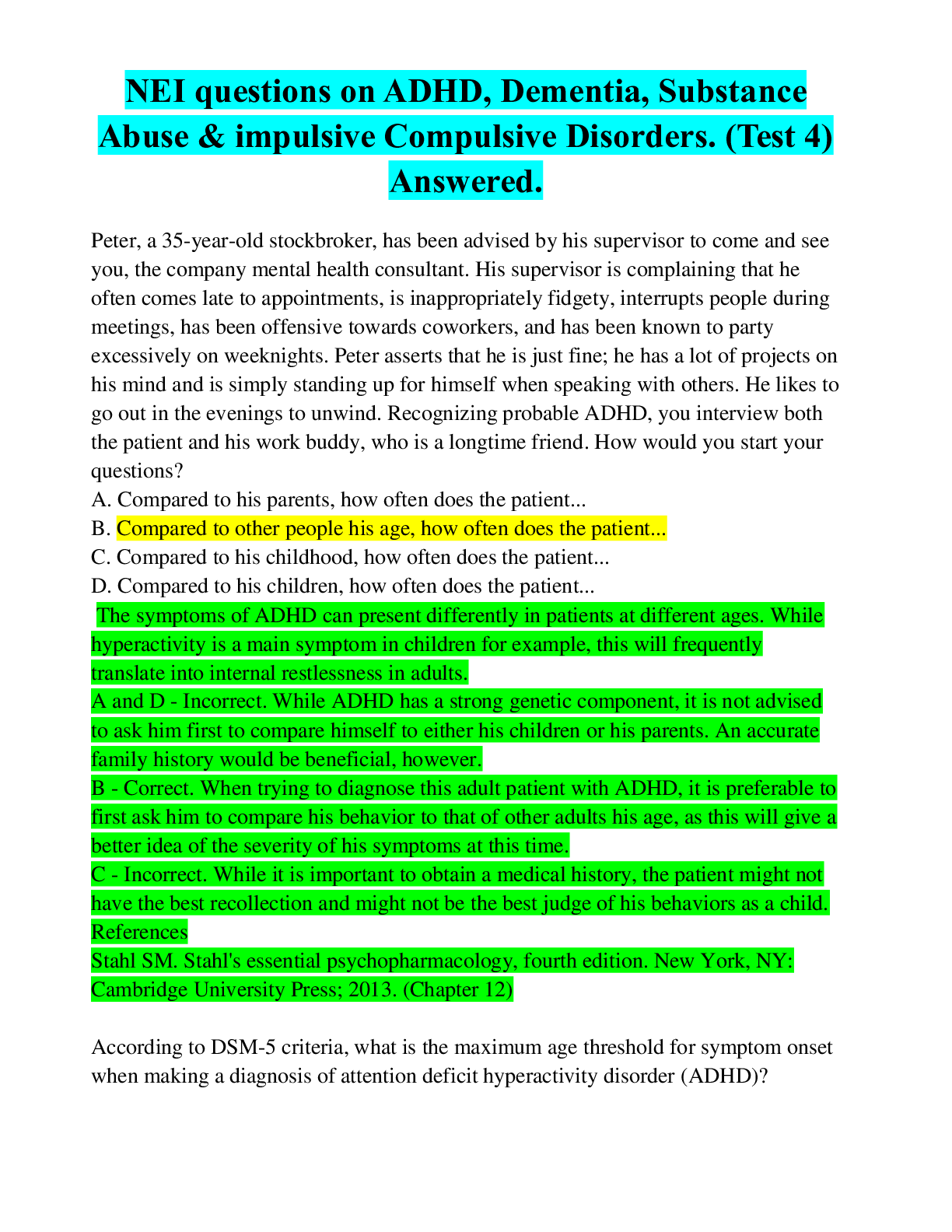
Buy this document to get the full access instantly
Instant Download Access after purchase
Buy NowInstant download
We Accept:

Reviews( 0 )
$14.00
Can't find what you want? Try our AI powered Search
Document information
Connected school, study & course
About the document
Uploaded On
Mar 06, 2022
Number of pages
11
Written in
Additional information
This document has been written for:
Uploaded
Mar 06, 2022
Downloads
0
Views
45

